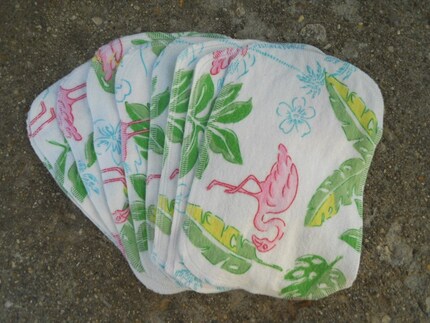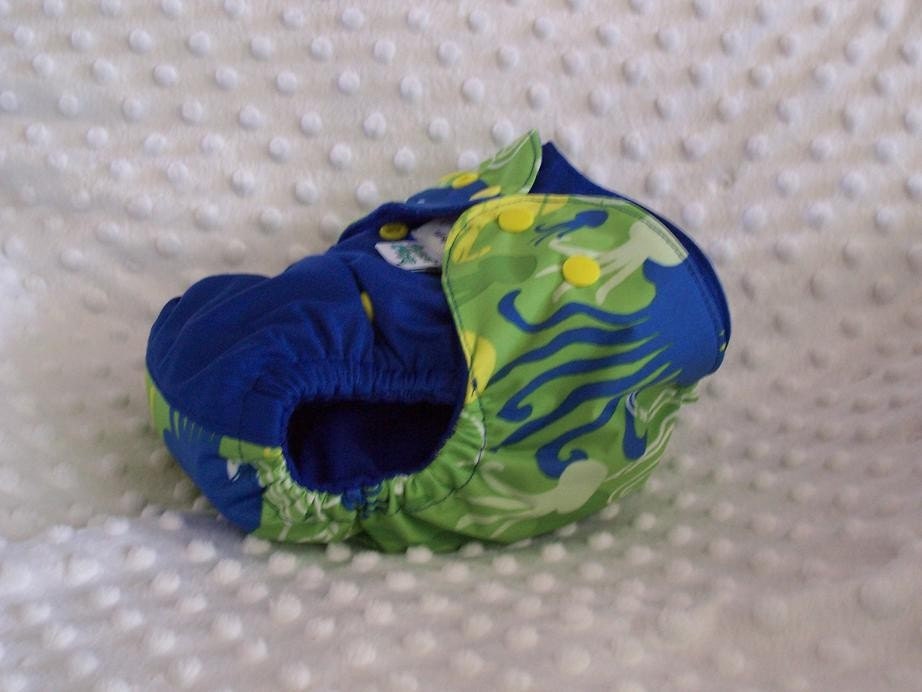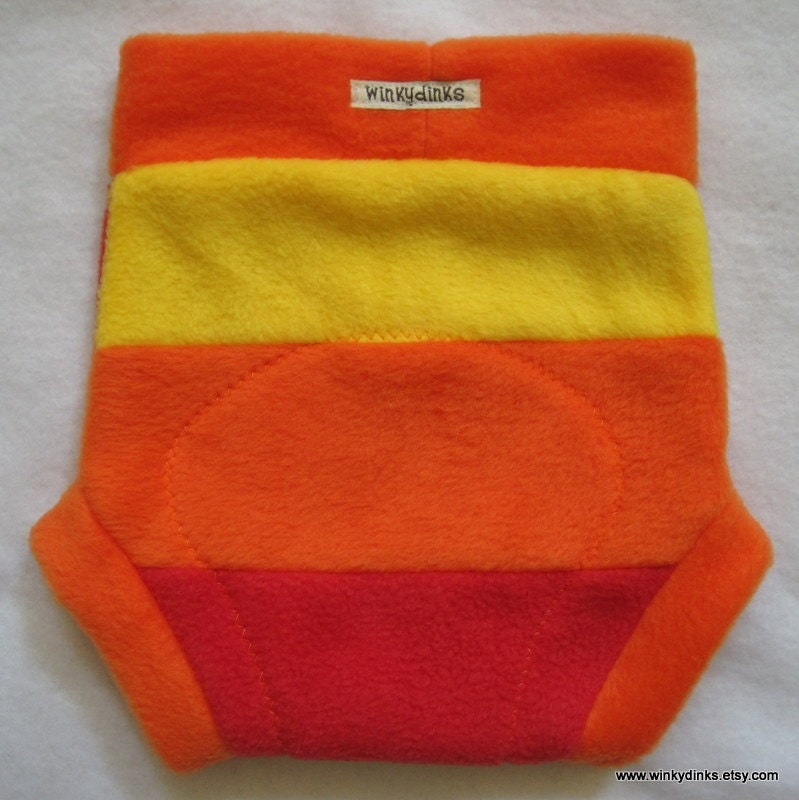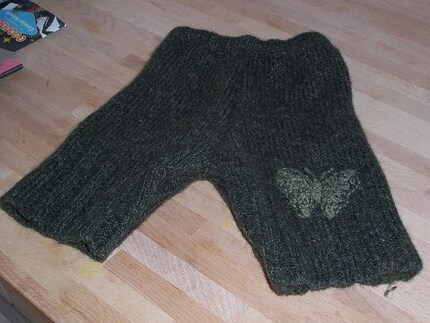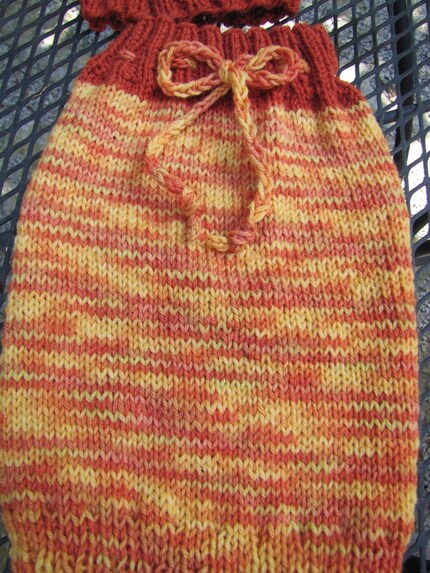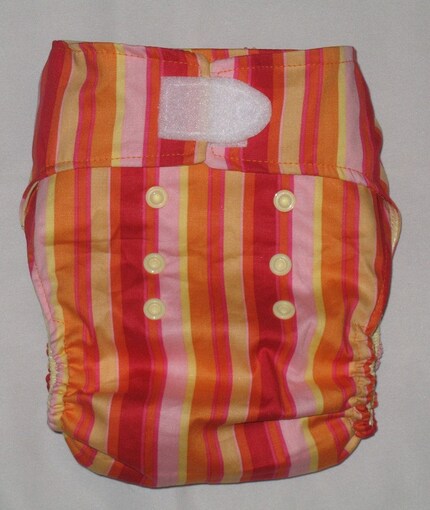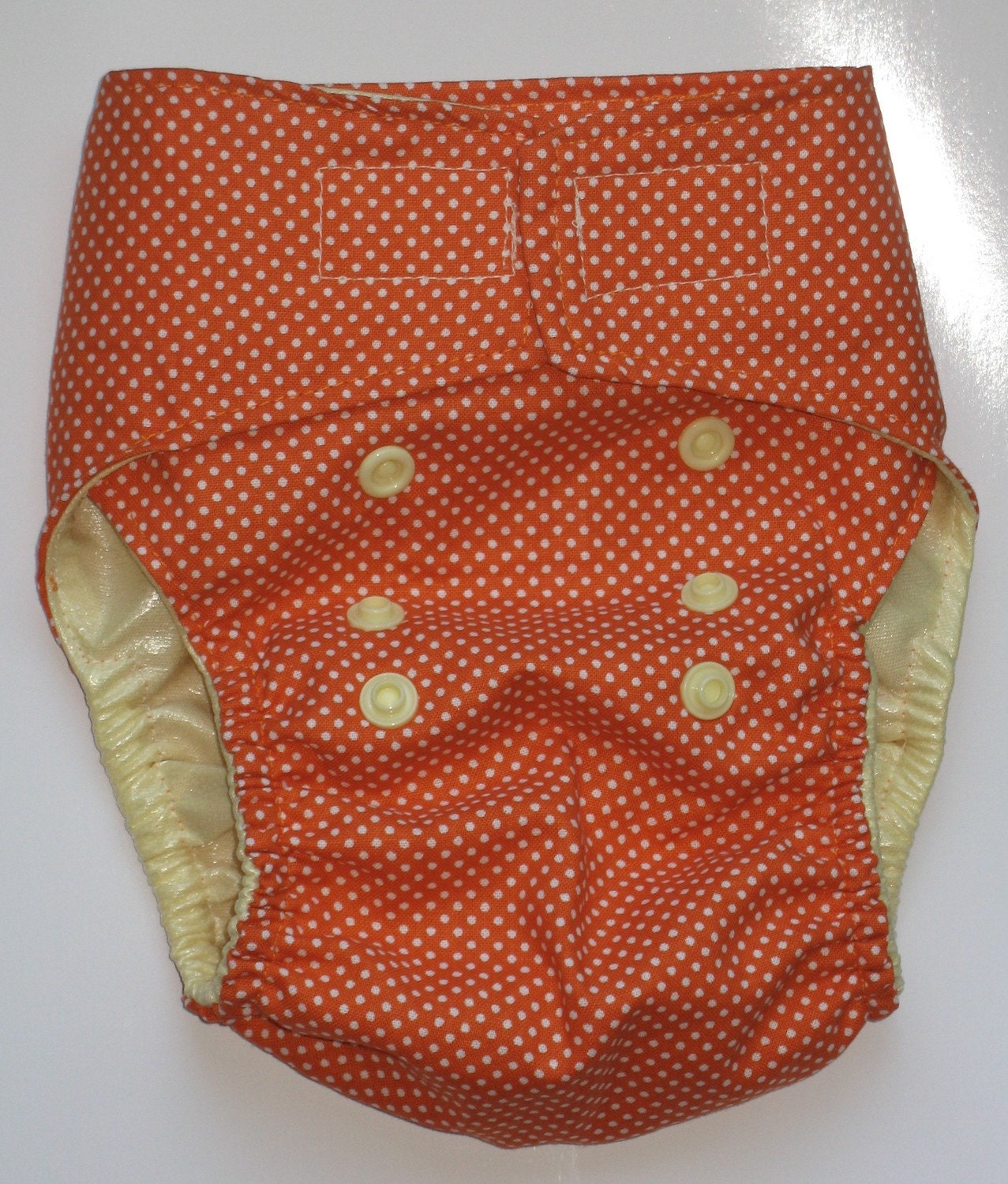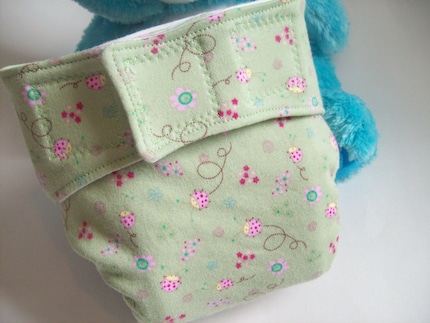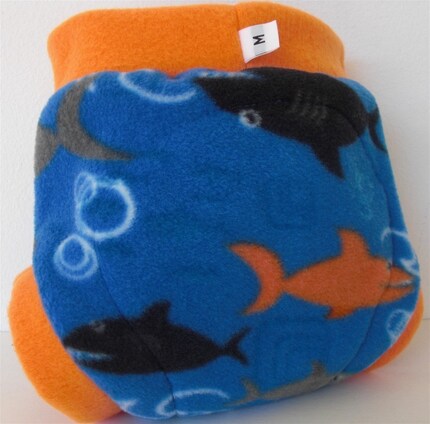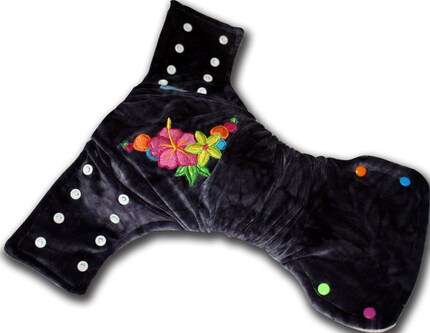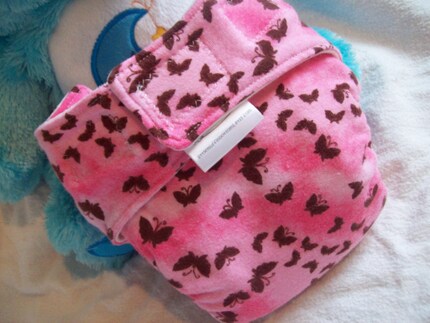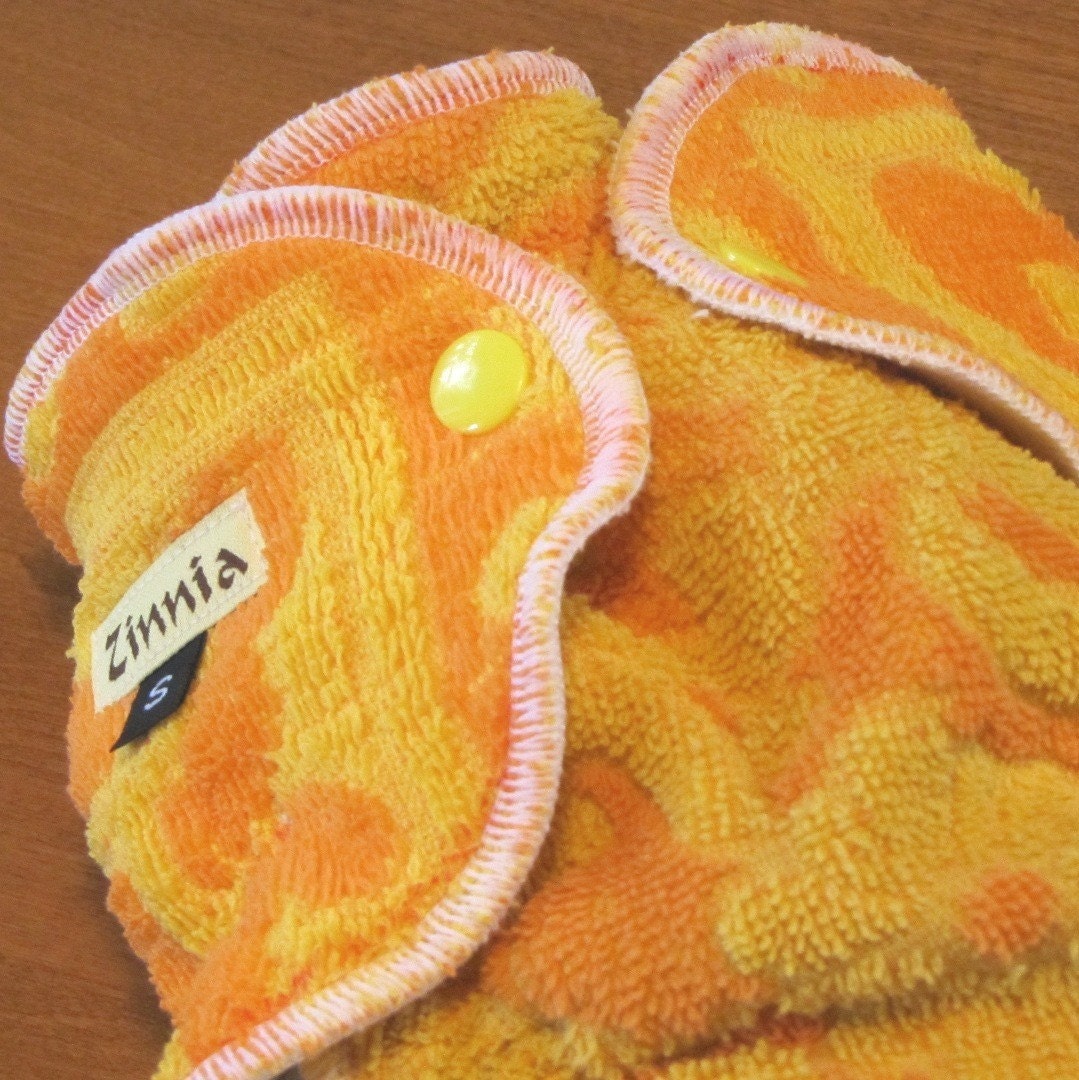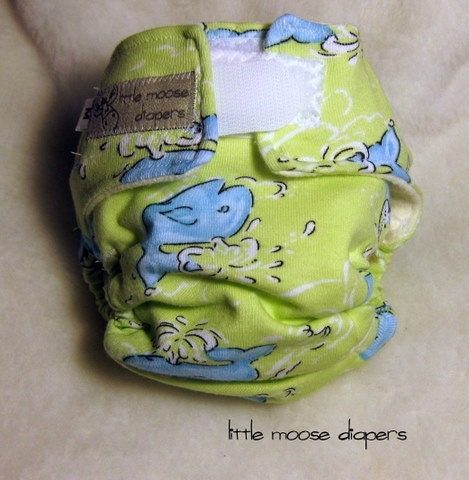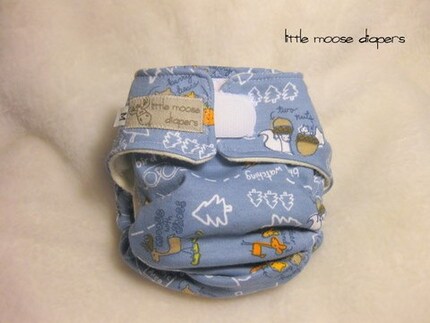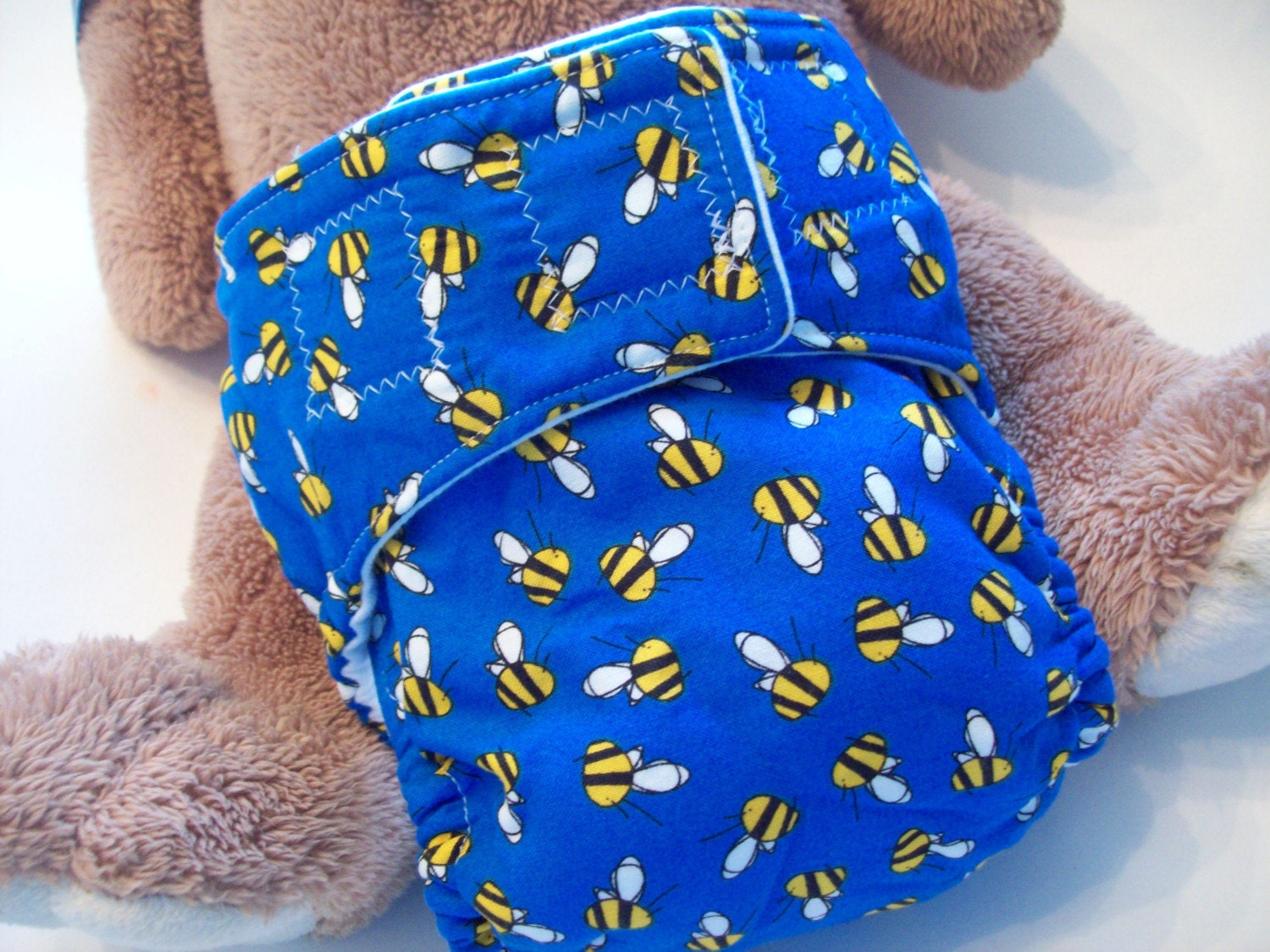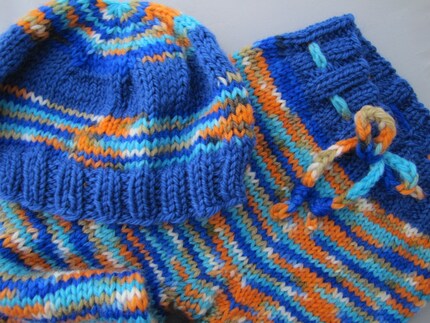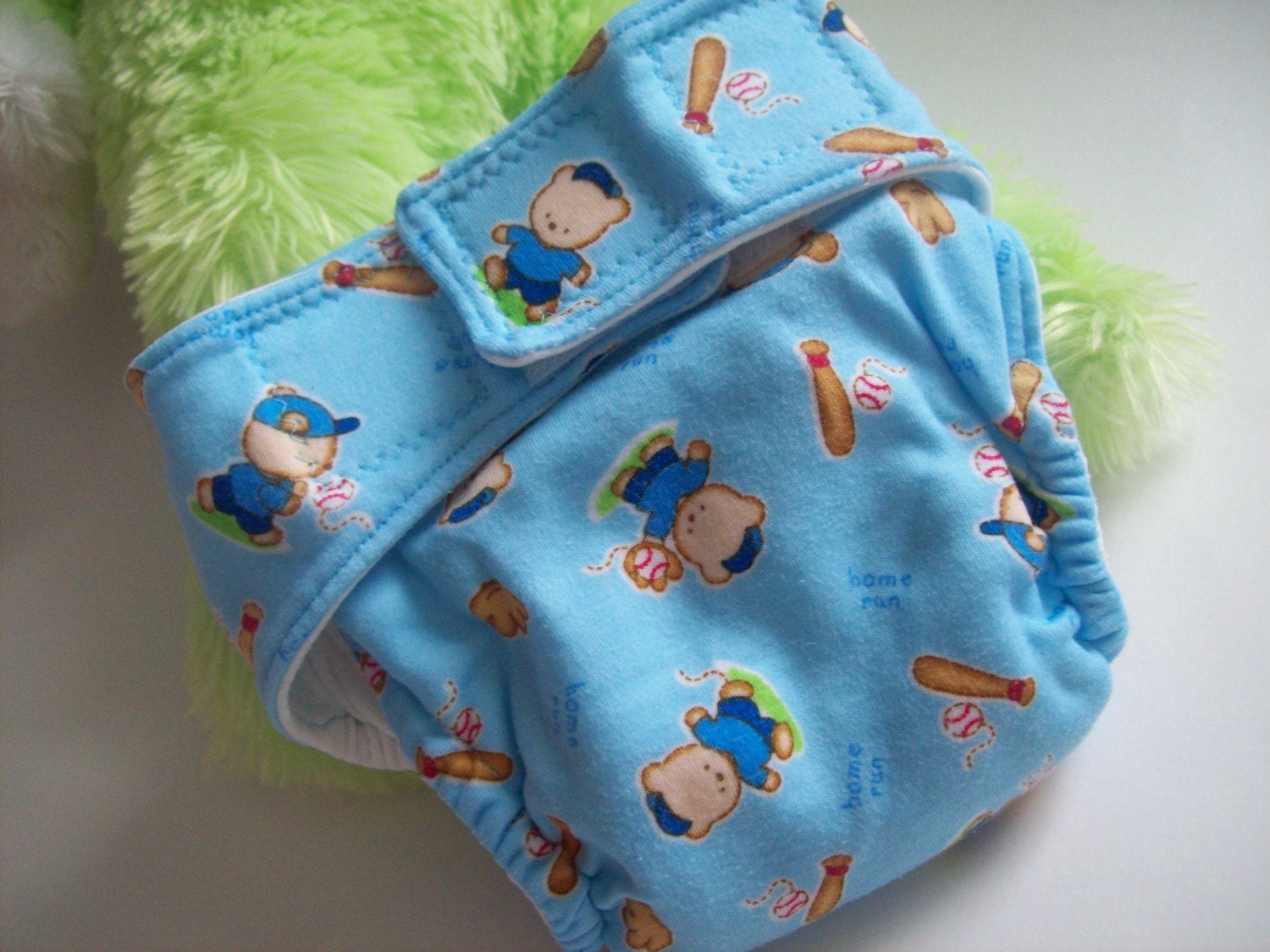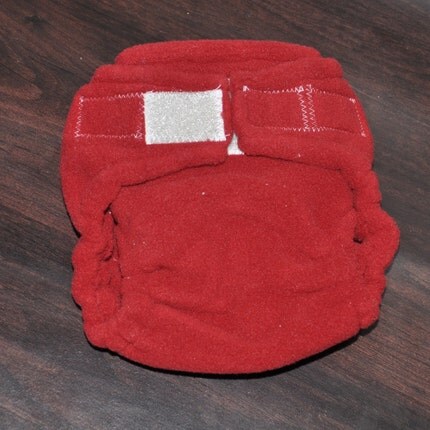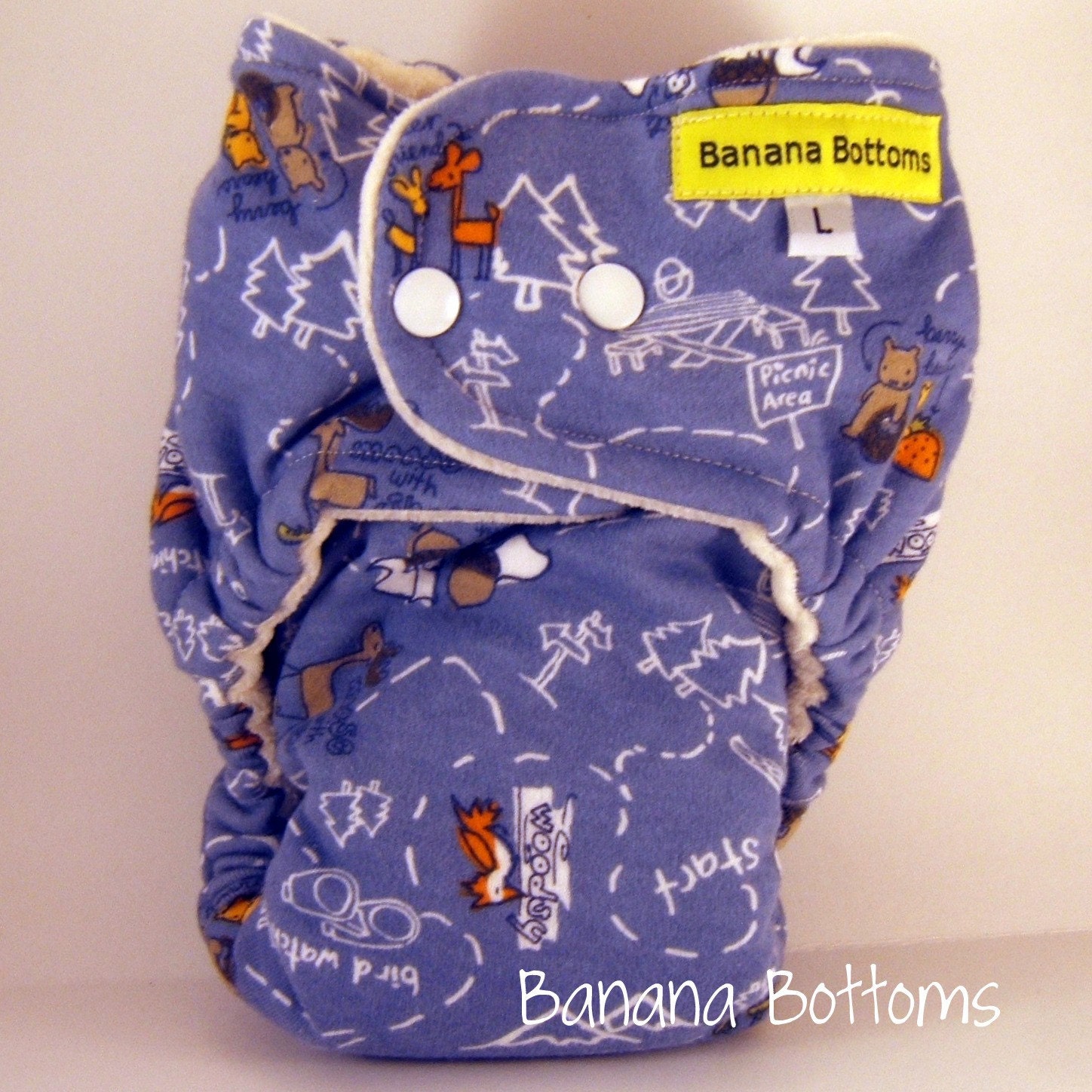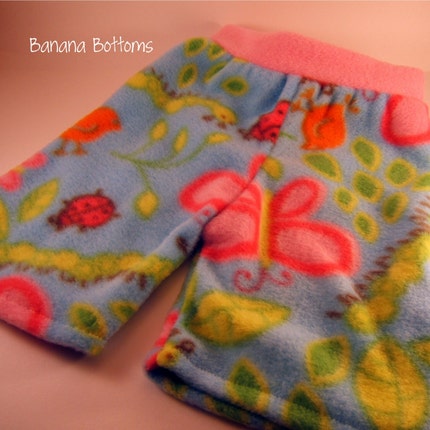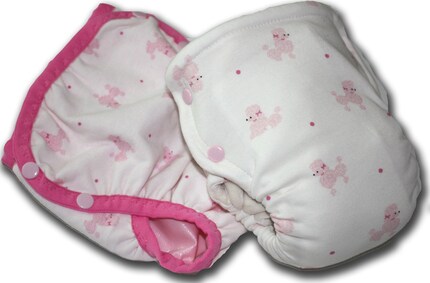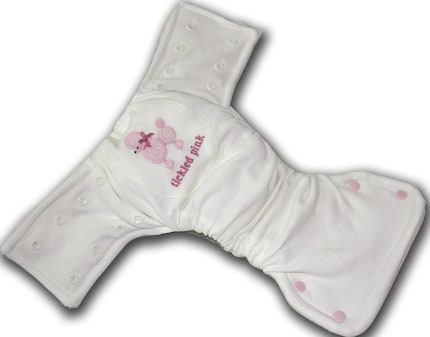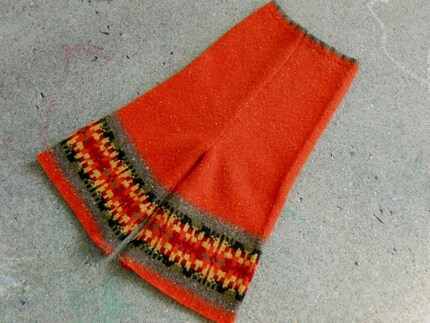Diapers are like denim. We all have that one style that fits us like a glove. This is how I explain the wide variety of dipes at my etsy store.
I make some diaper covers and fall in love with their fit on my little one. Others I don't care for & list them up at a discount. There are so many diapers out there, it really is a combination of personal preference and matching it up with your little ones shape.
Enough gabbing... here's some more info on the 525 dipe.
"525 Dipe" Features the following:
* Laundry tabs
* Hook & loop touchtape closure
* 3 Different rise settings 10" relaxed to 17" stretched
* Waist is 12"-20" relaxed
* Tabs cross over at the waist
* Waterproof layer of PUL on the inside
* Decorative cotton fabric on the outside
Monday, August 30, 2010
Thursday, August 26, 2010
Wednesday, August 25, 2010
Boulevard Designs: Fluff-a-Rump featured member and GIVEAWAY
Shop link: boulevarddesigns.etsy.com
Blog link: boulevarddesigns.com
Connect on Twitter
Connect on Facebook
Getting to know Boulevard Designs
What got you started in selling items in your Etsy shop?
I had owned my main business, Wallypop, for about four years at the time I opened my Etsy shop. The main purpose was to allow me to create items beyond just those I was able to keep regularly stocked at Wallypop, and to branch out a bit. I love the creativity that Etsy allows me
What is one piece of advice you wish someone would have told you when you started cloth diapering?
Hm. This actually doesn't apply to me, but with the way the industry has changed since I started diapering, I often tell people NOW not to be paralyzed with fear over the variety of brands out there. Don't go hog wild with a brand you've never heard of, read reviews, but don't be afraid to try one or two diapers from a new company.
What is your favorite thing to do when you’re not sewing/working for your shop?
Playing with my kids.
What is your current favorite item in your shop, and why?
Though it's not diapering related, the soap I made from Ginger's milk is so wonderful. It's moisturizing, gentle,and smells amazing. And I love that it's mostly local ingredients and the milk came from my very own goat.
What is your favorite material to work with?
Wool
How long has your shop been open?
3.5 years
Personal bio:
Sarah Reid is the owner of several small shops, including Wallypop (Wallypop.net), DiaperFAB (diaperfab.com), and Boulevard Designs (boulevarddesigns.com). She is a homeschooling mom to her two (so far) young'uns, and an adoring wife of her hard-working husband. In their spare time, Sarah and her husband also teach swing dancing for Swing Des Moines, a nonprofit organization they helped start over 10 years ago.
Fluff-a-Rump Giveaway details!
(Drawing to be held Sept 1st, 9pm PDT)
This week, Sarah from Boulevard Designs is giving away one Fitted cloth diaper similar to the one shown: in fabric chosen by the winner from her available stash. Retail value: $10.00 Open to USA and Canada
To enter the giveaway, first do the required entry:
-Visit Boulevard Designs and come back here and comment with something you love from her shop.
Additional optional entries (leave a separate comment for EACH of the following that apply) (be sure that you are signed in or leave a way to contact you in each comment):
- Follow Boulevard Designs on Twitter
- "Like" Boulevard Designs on Facebook (formerly known as Become a Fan)
- Post a public link to Boulevard Designs' shop or blog, and leave a comment here showing where it is
- Follow the Etsy Cloth Diaper team blog publicly
- "Like" the Etsy Cloth Diaper team on Facebook (formerly known as Become a Fan)
- Follow the Etsy Cloth Diaper team on Twitter
- Tweet about the fluff-a-rump giveaways (limit one per day) - be sure to use @etsyclothdiaper and @wallypop and #giveaway in your tweet!
A random blog comment number will be selected using random.org. The winner has 48 hours to respond or a new winner will be chosen. You MUST comment on this blog post to be entered, and have contact info in your profile. Each entry entry must be its own comment. If you combine entries into one comment, it will only count as one entry. Winning entries will be validated, and you MUST do the required entry to have any additional entries be valid. Must be 18 years or older to enter. Thank you for entering!
Check back next week for another Fluff-a-Rump on Hump Day featured Etsy shop and Giveaway!
Labels:
fluff-a-rump
Monday, August 23, 2010
Cloth Diaper Materials: Part TWO
More than you could possibly ever want to know about the materials used in cloth diapers, part two.
Now that we've learned about the different fibers used in cloth diapers (from last week's post), here's a guide to the different ways that those fibers can be made into fabric.
Hard-Working, Basic Fabrics

Diaper Twill: The twill used in diapers is actually similar to the twill used for pants. It is typically 100% cotton, but can also be found in hemp. It's usually used in prefold or flatfold diapers, but can also be used in fitteds. It softens with use, but will never be as soft as flannel.

Birdseye: Birdseye (or Birdseye Pique, often called "Diaper cloth") is a loosely-woven cotton used in prefolds. The fabric's weave makes it slightly textured. Birdseye is 100% cotton and can sometimes be found in organic and unbleached varieties. It will last through multiple children, and continues to soften, fluff, and increase in absorbancy through use. Birdseye is commonly used in flat diapers, but works well as a prefold, fitted, or in a soaker pad. Because Birdseye is fairly thin, it is used in multiple layers to achieve sufficient absorbency.

Flannel: Flannel is a soft, brushed cotton. Double napped flannel is what is commonly available in fabric stores. It's "double napped" because it's been brushed on both sides so it's soft and fuzzy on both sides. Killington flannel is an unbleached, strong, and durable flannel. Diaper flannel is the strongest flannel available, but can be difficult to find. Flannel is most commonly 100% cotton.
Thick, Absorbent Fabrics

Knit Terry: Loopy terrycloth that is soft and stretchy. Hooded little baby bath towels are often made of this. It's usually thinner than towel material, though you can get it in heavier weights. It doesn't form "diaper rocks" (pilly rocks of matted fabric shards inside a diaper), and won't get stiff. Knit Terry is available in cotton and cotton blends, hemp and hemp blends, and rayon from bamboo. It is sometimes knit with a polyester backing for durability.

Woven Terry: Also known as Terry Toweling, this fabric is most commonly used to make towels. Woven terry can get a bit stiff when used in a soaker pad, but it is overall a very soft and absorbent fabric. Woven terry is most commonly available in a 100% cotton.

Burley Knit Terry: a knit terry fabric with long, thick loops that have not been brushed. It's a pretty chunkly looking knit, and reminds me a bit of berber carpet. Burley knit terry is very absorbent, but bulkier than regular knit terry. Most commonly available in 100% cotton, or a cotton blend.

Microfiber Terry: Microfiber is actually a poly knit that's made up of lots of tiny plastic fibers. (micro fibers, actually.) These tiny fibers do not actually absorb (because they're synthetic), but they hold moisture between them, making microfiber good at quickly absorbing liquids. Microfiber is scratchy to the touch, and is best used away from direct contact with the skin. It is available only in 100% polyester.

Sherpa Knit Terry: Sherps is a knit terry fabric that has been brushed and washed to give it a fluffy softness.It's trimmer than burley knit terry, but bulkier than regular stretch knit terry. It's very soft to the touch and feels pretty luxurious. Sherpa is most commonly available in cotton with a polyester backing for durability.

Velour: A low-pile soft fabric that feels nice next to the skin. Commonly used to make the jogging suits worn by stereotypical mobsters in movies. Velour feels a wee bit like really plush carpet, or like a soft velvet. Velour is commonly available as a 100% polyester, but for cloth diapers, we use a 70-100% cotton velour. Velour is also available in rayon from bamboo, as well as hemp.
Nonabsorbent Fabrics

PUL: Stands for Poly Urethane Laminate. It is simply a knit or woven fabric that has been bonded with a urethane layer to make it waterproof. Some people pronounce it "pull" while others call it "P-U-L." PUL is the modern version of the plastic or rubber pants from a generation ago - it's soft, leak-proof, non-cracking, non-yellowing. It's a thin, versatile, waterproof fabric. It can be made from any type (fiber/weave) of fabric on the outside, but the inside will always be polyurethane. It's worth noting that the term "PUL" is unique to the cloth diaper industry.

Microfleece: Microfleece is polyester, so it doesn't absorb moisture. It's thin, though, so it acts as a wicking agent, pulling moisture from baby's skin to the diaper underneath. And it feels nice, too.

Suedecloth: Suede performs the same functions as microfleece, but it's much thinner. It is NOT leather suede, but rather a 100% polyester fabric. It wicks moisture away from baby to keep him or her feeling dry. Some people feel that suede doesn't keep baby as dry as microfleece does, but it resists stains better and doesn't pill up over time.

Microsuede: Talk about soft! Microsuede is also a polyester fabric. It will wick moisture away from baby's skin and to the absorbent diaper underneath. The benefit of microsuede is it's utter softness - this stuff is seriously snuggly. Some people feel that microsuede does not perform as well as suedecloth or microfleece inside diapers.
Other Fabrics

Interlock & Jersey Knits: Knit fabrics are stretchy. They can be heavyweight or thin, soft or scratchy. They can be made from cotton, polyester, rayon, hemp, or any combination. Knits are considered to be a delicate fabric and are not as durable as other fabric choices.

Woven Cottons: Woven fabrics do not have any "give;" they aren't stretchy like knits are. Wovens are far more durable than knits, and will stay looking nice longer than flannel or knits. Most wovens used in cloth diapers are 100% cotton.
Wool and Fleece
I thought I'd address wool and fleece separately, since they're somewhat unique.
There are many types of wool weaves. The most popular are wool knits (jersey, interlock, and doubleknit). Wool flannels and melton wool (usually used for coats) also work well for diaper covers. Wool knits will be stretchy; wool flannels and melton will not be stretchy. One is not better than the other; it's just a matter of what you prefer.
Wool is also sometimes described by the type of sheep it came from. Merino wool, for example, comes from a merino sheep. Merino wool is known for its softness, but it is prone to getting stretched out.
Fleece is always a polyester fabric. There are a few main types of fleece. Malden Mills WindPro and WindBloc fleeces are milled by Malden Mills and are quite water repellant. These fleeces are usually considered to be the gold standard in fleece for diaper covers. Polar fleece or Nordic fleece are the cheaper fleeces commonly available in fabric stores. It is fuzzy and much less dense than the Malden Mills fleeces. It works well as a diaper cover if doubled.
All fleece will wick if compressed when the diaper inside is saturated. Fleece also tends to sweat a bit - it might feel a bit dampish on the outside.
Some manufacturers apply a Durable Water Repellant (DWR) to their fleeces. This coating does wash out over time; if you notice your fleece covers stop working as well, consider treating them with a spray-on waterproofer.
Fleece is actually a polyester version of wool. It doesn't have wool's cool properties (like being antibacterial), but it does function similarly. Wool absorbs moisture, polyester fleece traps moisture between its fibers.
Written by Sarah Reid
http://boulevarddesigns.etsy.com
http://www.wallypop.net
Now that we've learned about the different fibers used in cloth diapers (from last week's post), here's a guide to the different ways that those fibers can be made into fabric.
Hard-Working, Basic Fabrics

Diaper Twill: The twill used in diapers is actually similar to the twill used for pants. It is typically 100% cotton, but can also be found in hemp. It's usually used in prefold or flatfold diapers, but can also be used in fitteds. It softens with use, but will never be as soft as flannel.

Birdseye: Birdseye (or Birdseye Pique, often called "Diaper cloth") is a loosely-woven cotton used in prefolds. The fabric's weave makes it slightly textured. Birdseye is 100% cotton and can sometimes be found in organic and unbleached varieties. It will last through multiple children, and continues to soften, fluff, and increase in absorbancy through use. Birdseye is commonly used in flat diapers, but works well as a prefold, fitted, or in a soaker pad. Because Birdseye is fairly thin, it is used in multiple layers to achieve sufficient absorbency.

Flannel: Flannel is a soft, brushed cotton. Double napped flannel is what is commonly available in fabric stores. It's "double napped" because it's been brushed on both sides so it's soft and fuzzy on both sides. Killington flannel is an unbleached, strong, and durable flannel. Diaper flannel is the strongest flannel available, but can be difficult to find. Flannel is most commonly 100% cotton.
Thick, Absorbent Fabrics

Knit Terry: Loopy terrycloth that is soft and stretchy. Hooded little baby bath towels are often made of this. It's usually thinner than towel material, though you can get it in heavier weights. It doesn't form "diaper rocks" (pilly rocks of matted fabric shards inside a diaper), and won't get stiff. Knit Terry is available in cotton and cotton blends, hemp and hemp blends, and rayon from bamboo. It is sometimes knit with a polyester backing for durability.

Woven Terry: Also known as Terry Toweling, this fabric is most commonly used to make towels. Woven terry can get a bit stiff when used in a soaker pad, but it is overall a very soft and absorbent fabric. Woven terry is most commonly available in a 100% cotton.

Burley Knit Terry: a knit terry fabric with long, thick loops that have not been brushed. It's a pretty chunkly looking knit, and reminds me a bit of berber carpet. Burley knit terry is very absorbent, but bulkier than regular knit terry. Most commonly available in 100% cotton, or a cotton blend.

Microfiber Terry: Microfiber is actually a poly knit that's made up of lots of tiny plastic fibers. (micro fibers, actually.) These tiny fibers do not actually absorb (because they're synthetic), but they hold moisture between them, making microfiber good at quickly absorbing liquids. Microfiber is scratchy to the touch, and is best used away from direct contact with the skin. It is available only in 100% polyester.

Sherpa Knit Terry: Sherps is a knit terry fabric that has been brushed and washed to give it a fluffy softness.It's trimmer than burley knit terry, but bulkier than regular stretch knit terry. It's very soft to the touch and feels pretty luxurious. Sherpa is most commonly available in cotton with a polyester backing for durability.

Velour: A low-pile soft fabric that feels nice next to the skin. Commonly used to make the jogging suits worn by stereotypical mobsters in movies. Velour feels a wee bit like really plush carpet, or like a soft velvet. Velour is commonly available as a 100% polyester, but for cloth diapers, we use a 70-100% cotton velour. Velour is also available in rayon from bamboo, as well as hemp.
Nonabsorbent Fabrics

PUL: Stands for Poly Urethane Laminate. It is simply a knit or woven fabric that has been bonded with a urethane layer to make it waterproof. Some people pronounce it "pull" while others call it "P-U-L." PUL is the modern version of the plastic or rubber pants from a generation ago - it's soft, leak-proof, non-cracking, non-yellowing. It's a thin, versatile, waterproof fabric. It can be made from any type (fiber/weave) of fabric on the outside, but the inside will always be polyurethane. It's worth noting that the term "PUL" is unique to the cloth diaper industry.

Microfleece: Microfleece is polyester, so it doesn't absorb moisture. It's thin, though, so it acts as a wicking agent, pulling moisture from baby's skin to the diaper underneath. And it feels nice, too.

Suedecloth: Suede performs the same functions as microfleece, but it's much thinner. It is NOT leather suede, but rather a 100% polyester fabric. It wicks moisture away from baby to keep him or her feeling dry. Some people feel that suede doesn't keep baby as dry as microfleece does, but it resists stains better and doesn't pill up over time.

Microsuede: Talk about soft! Microsuede is also a polyester fabric. It will wick moisture away from baby's skin and to the absorbent diaper underneath. The benefit of microsuede is it's utter softness - this stuff is seriously snuggly. Some people feel that microsuede does not perform as well as suedecloth or microfleece inside diapers.
Other Fabrics

Interlock & Jersey Knits: Knit fabrics are stretchy. They can be heavyweight or thin, soft or scratchy. They can be made from cotton, polyester, rayon, hemp, or any combination. Knits are considered to be a delicate fabric and are not as durable as other fabric choices.

Woven Cottons: Woven fabrics do not have any "give;" they aren't stretchy like knits are. Wovens are far more durable than knits, and will stay looking nice longer than flannel or knits. Most wovens used in cloth diapers are 100% cotton.
Wool and Fleece
I thought I'd address wool and fleece separately, since they're somewhat unique.
There are many types of wool weaves. The most popular are wool knits (jersey, interlock, and doubleknit). Wool flannels and melton wool (usually used for coats) also work well for diaper covers. Wool knits will be stretchy; wool flannels and melton will not be stretchy. One is not better than the other; it's just a matter of what you prefer.
Wool is also sometimes described by the type of sheep it came from. Merino wool, for example, comes from a merino sheep. Merino wool is known for its softness, but it is prone to getting stretched out.
Fleece is always a polyester fabric. There are a few main types of fleece. Malden Mills WindPro and WindBloc fleeces are milled by Malden Mills and are quite water repellant. These fleeces are usually considered to be the gold standard in fleece for diaper covers. Polar fleece or Nordic fleece are the cheaper fleeces commonly available in fabric stores. It is fuzzy and much less dense than the Malden Mills fleeces. It works well as a diaper cover if doubled.
All fleece will wick if compressed when the diaper inside is saturated. Fleece also tends to sweat a bit - it might feel a bit dampish on the outside.
Some manufacturers apply a Durable Water Repellant (DWR) to their fleeces. This coating does wash out over time; if you notice your fleece covers stop working as well, consider treating them with a spray-on waterproofer.
Fleece is actually a polyester version of wool. It doesn't have wool's cool properties (like being antibacterial), but it does function similarly. Wool absorbs moisture, polyester fleece traps moisture between its fibers.
Written by Sarah Reid
http://boulevarddesigns.etsy.com
http://www.wallypop.net
Thursday, August 19, 2010
Wednesday, August 18, 2010
Fluff-a-Rump winner of WeeEssentials wipe solution
The winner of this week's giveaway of a package of WeeEssentials wipes solution is entry #32:
Congratulations to Justine M!
Thank you to everyone who entered! Next week we'll kick off WEEKLY featured members and giveaways for the month of September. We're celebrating 6 months of the Fluff-a-Rump giveaways!
Congratulations to Justine M!
- Justine M. said... 32
- I follow ECD blog (shows as JMC)
Thank you to everyone who entered! Next week we'll kick off WEEKLY featured members and giveaways for the month of September. We're celebrating 6 months of the Fluff-a-Rump giveaways!
Labels:
fluff-a-rump
Monday, August 16, 2010
Cloth Diaper Materials: Part ONE
More than you could possibly ever want to know about the materials used in cloth diapers, part one! (Check back next Monday for part two!)
One of the things that's so awesome about the world of handmade cloth diapers is the variety that's available. Mass produced diapers and disposable diapers come in one or two options, but handmade? Home sewers can create diapers out of dozens of utilitarian or luxurious fabrics. This is great for the shopper, because it means you can get exactly what you want - if you know what you want.
The main problem with this sometimes dizzying array of choices is that it can be hard for the average person to keep up with all the choices.
What's the difference between microfleece and microfiber? Why would I want jersey or woven cotton? Should I choose sherpa or hemp? What exactly are sherpa and hemp, anyway?
Well, I'm here to help guide you through the different materials available in diapers, so just keep on reading!
First, the difference between FIBER and WEAVE.
Fiber refers to what kind of plant or animal a particular piece of fabric came from. Cotton, Hemp, Wool, and Rayon are all fibers.
Weave refers to how the fibers were made into fabric. Jersey, flannel, terrycloth, twill, denim, fleece. Those are all types of weave.
Put those two together and you have an excellent description of a piece of fabric - Cotton twill. Hemp flannel. Wool jersey.
So now you can see that just describing something as "hemp" doesn't give us quite enough information. My shower curtain is made of hemp, but you wouldn't want that anywhere near your baby's delicate rear end - it's made of hemp canvas. (Canvas is a rather coarse weave, not soft at all.) But hemp jersey, hemp flannel, hemp terrycloth - those are all great fabrics for diapers. By the same token, a polyester flannel would be a terrible choice, but a cotton flannel would be fine. Both the FIBER and the WEAVE are important to know.
First, the fibers.
Let's start with natural fibers. These are fibers that started out as something alive. Natural fibers are, as a rule, absorbent and breatheable. They are also renewable.

Wool: Wool comes from sheep. It's breathable, resistant to fungus and mildew, able to absorb 30% of its weight without feeling damp, and PERFECT for diaper covers. Wool contains natural lanolin which helps a wool cover function like it does (keeping moisture where it belongs). Wool is long-lasting and very durable. It does require special care in the laundry.

Hemp: Hemp comes from the cannabis plant - but, no, you cannot smoke it. "Industrial hemp" as it is sometimes called, is very low in THC (the psychoactive ingredient in marajuana) but high in CBD (an antipsychoactive ingredient) - it would just give you a headache, apparently. (Source) The hemp used in cloth diapers is rarely 100% hemp; it is usually a blend with cotton.
Hemp is one of the strongest and most durable of the natural fibers. Hemp is also naturally resistant to mold and ultraviolet light. Because hemp fibers are porous, hemp fabric is more water absorbent than any fabric including cotton. Hemp also has environmental benefits. It is very fast growing, producing more fiber yield per acre than any other fiber. It also leaves the soil in excellent condition, and doesn't tend to need chemicals such as pesticides or fertilizers. (Claims that this makes hemp "naturally organic" are a bit overstated, however.) Because it is not legal to grow hemp in the United States, all hemp materials are imported.
All hemp fabrics tend to stiffen up a bit with the first few washes, but soften over time. And a bonus random fact: Betsy Ross sewed the first American flag from hemp.

Cotton: Cotton is made from the seed pods of the cotton plant. It is soft, absorbent, and breathable. It's widely aavailable and inexpendive.
Today's cotton is typically grown from genetically modified seeds, which were introduced to somewhat lessen the heavy dependence on insecticides, although the genetic modification is not effective against all cotton pests, and cotton remains a heavy user of fertilizer and insecticides. (Source)

Silk: Silk is made from the fibers of the silkworm's coccoon. It is one of the strongest natural fibers, but loses significant strength when wet. Because of this, and because it is prone to getting stretched out, silk should be handwashed. Some people recommend raw silk liners to help with diaper rash.
There are many more natural fibers, but they are not widely used in cloth diapering.
Now synthetic fibers. These are fibers that started out in a lab somewhere. Synthetic fibers are, by definition, not absorbent. Generally speaking, they started life as petroleum.
Polyester: Polyester is a synthetic polymer made of some complicated compounds that scientists somewhere combined and poof: the seventies were born. Today's polyesters are much more appealing than those of a few decades ago, and there is a growing market for polyesters made from recycled materials, such as pop bottles. Because polyester is nonabsorbent, Polyesters are used primarily for diaper covers (as PUL and as fleece) and for stay-dry layers (microfleece, suede), though they also make an appearence in some soaker pads and inserts as microfiber.
Nylon: Nylon is a thermoplastic silky material (means nothing to me, either) that was originally developed as a replacement for silk. In cloth diapering, nylon is most commonly used in PUL diaper covers.
Again, there are many more synthetic fibers, but they are rarely used in cloth diapering.
Now for a fiber that's a little bit of both.

Rayon: Rayon is a funny fabric – it starts as something natural (trees, or bamboo) but goes through so much processing that it pretty much loses most of the properties of the material it started out as. And this processing is highly toxic. Most of the rayon we typically think of (in dresses, shirts, etc) started out as trees.
But the rayon we encounter in cloth diapering is typically Bamboo rayon - fabric that started out as bamboo. Any time you see "bamboo," it should say "rayon made from bamboo." Bamboo fabric = rayon.
Kathleen at Fashion Incubator had an excellent article about this a while back, that's worth a read. She says, in part, "The FTC is concerned that consumers are being misled by greenwashing. Although rayon is a natural but man made fabric, rayon production is highly toxic (Avtex, the largest EPA Super Fund clean up site was a rayon plant)." Crafting a Green World also has a great article about Bamboo rayon that mentions, in part, that bamboo rayon's recent popularity is resulting in overharvesting of some species of bamboo.
Some diapers are also made from soy rayon. According to Crafting a Green World, "One of the coolest things about soy fiber is that it’s made using the byproducts from the creation of soy foods like tofu. That means soy isn’t grown just for fabric purposes, and that soy fabric production helps reduce waste. The process for making the fabric ...is very chemical-heavy, but unlike a lot of rayon made from bamboo, it’s a closed-loop system, meaning they reuse the chemicals over and over rather than dumping them." (Source)
This is neither a fiber nor a weave, but an optional designation.
Organic: "To gain organic certification, a farm must have been inspected by an accredited certification organization using strict national or international standards. Farmers raising organic fiber follow standards that nurture the soil or animal from which it comes and do not use toxic insecticides, herbicides or fungicides." (Source)
Organic fabrics tend to be softer and can be more absorbent than their non-organic counterparts.
Written by Sarah Reid
http://boulevarddesigns.etsy.com
http://www.wallypop.net
One of the things that's so awesome about the world of handmade cloth diapers is the variety that's available. Mass produced diapers and disposable diapers come in one or two options, but handmade? Home sewers can create diapers out of dozens of utilitarian or luxurious fabrics. This is great for the shopper, because it means you can get exactly what you want - if you know what you want.
The main problem with this sometimes dizzying array of choices is that it can be hard for the average person to keep up with all the choices.
What's the difference between microfleece and microfiber? Why would I want jersey or woven cotton? Should I choose sherpa or hemp? What exactly are sherpa and hemp, anyway?
Well, I'm here to help guide you through the different materials available in diapers, so just keep on reading!
First, the difference between FIBER and WEAVE.
Fiber refers to what kind of plant or animal a particular piece of fabric came from. Cotton, Hemp, Wool, and Rayon are all fibers.
Weave refers to how the fibers were made into fabric. Jersey, flannel, terrycloth, twill, denim, fleece. Those are all types of weave.
Put those two together and you have an excellent description of a piece of fabric - Cotton twill. Hemp flannel. Wool jersey.
So now you can see that just describing something as "hemp" doesn't give us quite enough information. My shower curtain is made of hemp, but you wouldn't want that anywhere near your baby's delicate rear end - it's made of hemp canvas. (Canvas is a rather coarse weave, not soft at all.) But hemp jersey, hemp flannel, hemp terrycloth - those are all great fabrics for diapers. By the same token, a polyester flannel would be a terrible choice, but a cotton flannel would be fine. Both the FIBER and the WEAVE are important to know.
First, the fibers.
Let's start with natural fibers. These are fibers that started out as something alive. Natural fibers are, as a rule, absorbent and breatheable. They are also renewable.

Wool: Wool comes from sheep. It's breathable, resistant to fungus and mildew, able to absorb 30% of its weight without feeling damp, and PERFECT for diaper covers. Wool contains natural lanolin which helps a wool cover function like it does (keeping moisture where it belongs). Wool is long-lasting and very durable. It does require special care in the laundry.

Hemp: Hemp comes from the cannabis plant - but, no, you cannot smoke it. "Industrial hemp" as it is sometimes called, is very low in THC (the psychoactive ingredient in marajuana) but high in CBD (an antipsychoactive ingredient) - it would just give you a headache, apparently. (Source) The hemp used in cloth diapers is rarely 100% hemp; it is usually a blend with cotton.
Hemp is one of the strongest and most durable of the natural fibers. Hemp is also naturally resistant to mold and ultraviolet light. Because hemp fibers are porous, hemp fabric is more water absorbent than any fabric including cotton. Hemp also has environmental benefits. It is very fast growing, producing more fiber yield per acre than any other fiber. It also leaves the soil in excellent condition, and doesn't tend to need chemicals such as pesticides or fertilizers. (Claims that this makes hemp "naturally organic" are a bit overstated, however.) Because it is not legal to grow hemp in the United States, all hemp materials are imported.
All hemp fabrics tend to stiffen up a bit with the first few washes, but soften over time. And a bonus random fact: Betsy Ross sewed the first American flag from hemp.

Cotton: Cotton is made from the seed pods of the cotton plant. It is soft, absorbent, and breathable. It's widely aavailable and inexpendive.
Today's cotton is typically grown from genetically modified seeds, which were introduced to somewhat lessen the heavy dependence on insecticides, although the genetic modification is not effective against all cotton pests, and cotton remains a heavy user of fertilizer and insecticides. (Source)

Silk: Silk is made from the fibers of the silkworm's coccoon. It is one of the strongest natural fibers, but loses significant strength when wet. Because of this, and because it is prone to getting stretched out, silk should be handwashed. Some people recommend raw silk liners to help with diaper rash.
There are many more natural fibers, but they are not widely used in cloth diapering.
Now synthetic fibers. These are fibers that started out in a lab somewhere. Synthetic fibers are, by definition, not absorbent. Generally speaking, they started life as petroleum.
Polyester: Polyester is a synthetic polymer made of some complicated compounds that scientists somewhere combined and poof: the seventies were born. Today's polyesters are much more appealing than those of a few decades ago, and there is a growing market for polyesters made from recycled materials, such as pop bottles. Because polyester is nonabsorbent, Polyesters are used primarily for diaper covers (as PUL and as fleece) and for stay-dry layers (microfleece, suede), though they also make an appearence in some soaker pads and inserts as microfiber.
Nylon: Nylon is a thermoplastic silky material (means nothing to me, either) that was originally developed as a replacement for silk. In cloth diapering, nylon is most commonly used in PUL diaper covers.
Again, there are many more synthetic fibers, but they are rarely used in cloth diapering.
Now for a fiber that's a little bit of both.

Rayon: Rayon is a funny fabric – it starts as something natural (trees, or bamboo) but goes through so much processing that it pretty much loses most of the properties of the material it started out as. And this processing is highly toxic. Most of the rayon we typically think of (in dresses, shirts, etc) started out as trees.
But the rayon we encounter in cloth diapering is typically Bamboo rayon - fabric that started out as bamboo. Any time you see "bamboo," it should say "rayon made from bamboo." Bamboo fabric = rayon.
Kathleen at Fashion Incubator had an excellent article about this a while back, that's worth a read. She says, in part, "The FTC is concerned that consumers are being misled by greenwashing. Although rayon is a natural but man made fabric, rayon production is highly toxic (Avtex, the largest EPA Super Fund clean up site was a rayon plant)." Crafting a Green World also has a great article about Bamboo rayon that mentions, in part, that bamboo rayon's recent popularity is resulting in overharvesting of some species of bamboo.
Some diapers are also made from soy rayon. According to Crafting a Green World, "One of the coolest things about soy fiber is that it’s made using the byproducts from the creation of soy foods like tofu. That means soy isn’t grown just for fabric purposes, and that soy fabric production helps reduce waste. The process for making the fabric ...is very chemical-heavy, but unlike a lot of rayon made from bamboo, it’s a closed-loop system, meaning they reuse the chemicals over and over rather than dumping them." (Source)
This is neither a fiber nor a weave, but an optional designation.
Organic: "To gain organic certification, a farm must have been inspected by an accredited certification organization using strict national or international standards. Farmers raising organic fiber follow standards that nurture the soil or animal from which it comes and do not use toxic insecticides, herbicides or fungicides." (Source)
Organic fabrics tend to be softer and can be more absorbent than their non-organic counterparts.
Written by Sarah Reid
http://boulevarddesigns.etsy.com
http://www.wallypop.net
Sunday, August 15, 2010
New Items at Laina's Laundry

I've just listed a few new items in my Etsy shop. I'm particularly fond of this adorable birdie prefold. Check it and the other new items out at LainasLaundry.etsy.com!
Thursday, August 12, 2010
Wednesday, August 11, 2010
Aloha!
Well I'm back on the needles! Apparently the three weddings in a year and the move to Hawaii took ALL my time in '09! I've been knitting, listing, and studying! Knitting soakers and Baby Caps. Listing soakers and caps AND sewing knitting bags! Studying how to use GIMP, how to write meta tags, and how to advertise! Eeek. There is so much to learn and do!
Meantime? Check out these cuties I've recently knitted and listed!
Mahalos nui loa !!!
Betty of Betriska.com
Meantime? Check out these cuties I've recently knitted and listed!
Mahalos nui loa !!!
 |
| Big - My Teddy Bear Model! |
Betty of Betriska.com
Labels:
diaper covers,
wool,
wool soakers
Subscribe to:
Posts (Atom)
